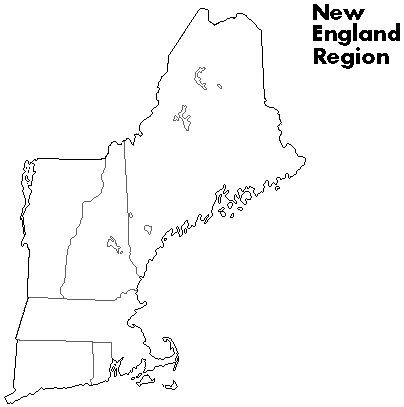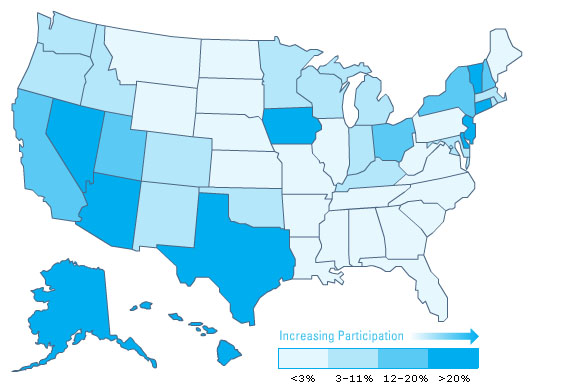
A recent analysis shows that In 2006, the percentage of newly constructed single family homes earning the government’s Energy Star label for superior energy efficiency exceeded 12 percent in 15 states, with three New England states at the forefront of that list.
Connecticut, New Hampshire and Vermont are among the leaders which host the greatest percent of Energy Star certified homes, alongside Alaska, Arizona, California, Delaware, Hawaii, Iowa, Nevada, New Jersey, New York, Ohio, Texas and Utah.
“New England is once again leading the nation on energy conservation and environmental issues,†said Robert Varney, regional administrator of EPA’s New England office. “Consumers don’t have to limit their smart energy choices to energy efficient cars and appliances, but more and more can choose high-efficiency, low-emission systems in their homes.”
Homes that earn the Energy Star offer homeowners all the features they want in a new home, plus energy-efficiency improvements that deliver better performance, greater comfort, and lower utility bills, all while helping to protect the environment.
To earn the Energy Star, homes must be independently verified as meeting EPA’s strict guidelines for energy efficiency. Once these standards are met, homes are at least 15 percent more efficient than homes built to the 2004 International Residential Code and typically, they include energy-saving features which make them 20 to 30 percent more efficient than standard homes.
As a percentage of new home construction in 2006, the three New England states show impressive amounts of energy efficient Energy Star certified homes: Connecticut – 23%; New Hampshire – 17%; and Vermont 24 percent. Elsewhere in New England, both Massachusetts and Rhode Island had between three and 11 percent of new homes constructed according to Energy Star standards, and Maine had less than three percent.

Nearly 200,000 new homes nationwide earned the Energy Star in 2006, bringing the total number of Energy Star qualified homes across the nation to almost 750,000. To date, these homes have locked in annual savings of more than $180 million for homeowners by saving over 1 billion kWh of electricity and 100 million therms of natural gas.
EPA started the Energy Star program in 1992 as market based approach to reducing greenhouse gas emissions through energy efficiency. In 2006, Americans, with the help of Energy Star, saved $14 billion and prevented greenhouse gas emissions equivalent to those from 25 million vehicles.
Home energy use accounts for nearly 17 percent of the total U.S. greenhouse gas emissions and 21 percent of energy consumption nationwide. Today, more than 3,500 builders are committed to building Energy Star qualified homes and there are Energy Star qualified homes in every state across the country.
| State |
2006 ENERGY STAR
Qualified New Homes¹ |
2006 One-Unit
Housing Permits2 |
2006 ENERGY STAR
Market Penetration |
|
|---|---|---|---|---|
| Alaska | 1,024 | 1,612 | 64% | |
| Arizona | 20,101 | 55,633 | 36% | |
| California | 18,105 | 107,714 | 17% | |
| Connecticut | 1,606 | 7,107 | 23% | |
| Delaware | 1,217 | 5,015 | 24% | |
| Hawaii | 2,086 | 5,597 | 37% | |
| Iowa | 5,866 | 10,250 | 57% | |
| Nevada | 18,891 | 26,722 | 71% | |
| New Hampshire | 820 | 4,826 | 17% | |
| New Jersey | 5,351 | 17,113 | 31% | |
| New York | 2,569 | 19,981 | 13% | |
| Ohio | 3,462 | 27,514 | 13% | |
| Texas | 60,839 | 162,750 | 37% | |
| Utah | 3,554 | 22,595 | 16% | |
| Vermont | 501 | 2,071 | 24% | |
As you can see some states such as Alaska and Texas are leading the way in energy efficient home building. Mostly because of the large amount of energy used to heat or cool these homes. New england, while make great strides, has a long way to go to catch up with these sates. I do find it interesting that these very red states are leading in what is considered a very liberal issue. Perhaps because it makes good financial sense to have an efficient home.
The next step will be to create homes that not only use energy efficiently but also create clean renewable energy on site. These efficient homes are the perfect site to install solar panels, small scale wind turbines, and geothermal systems. Use less energy, create your own, feed the rest into the grid for everyone else.
Part of the reason the east is lagging in some areas is there aren’t a lot of new houses being built. Places like Texas and Alaska still have lots of space for new houses, and new subdivisions are still being put up, while the Northeast has run out of space.